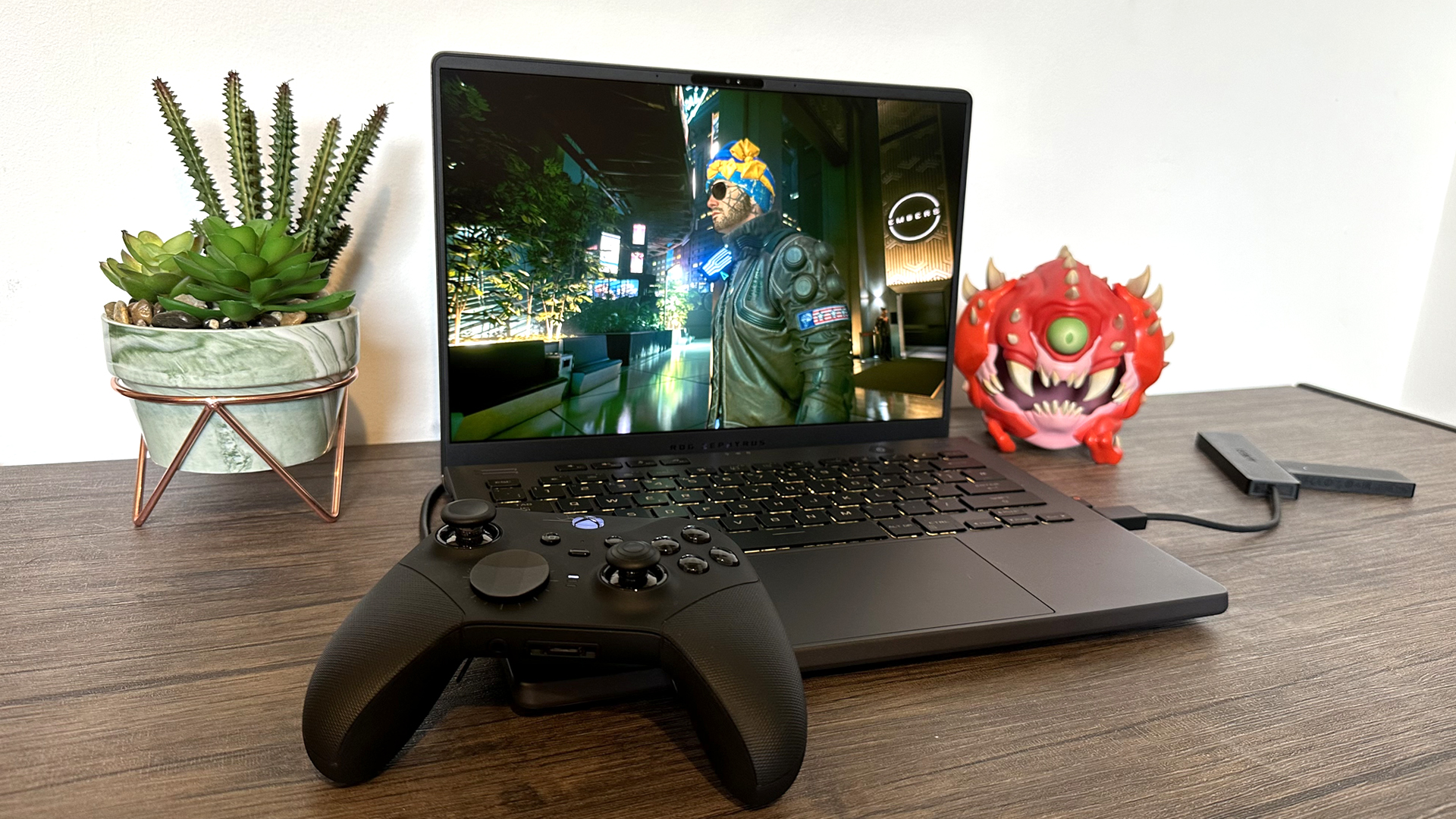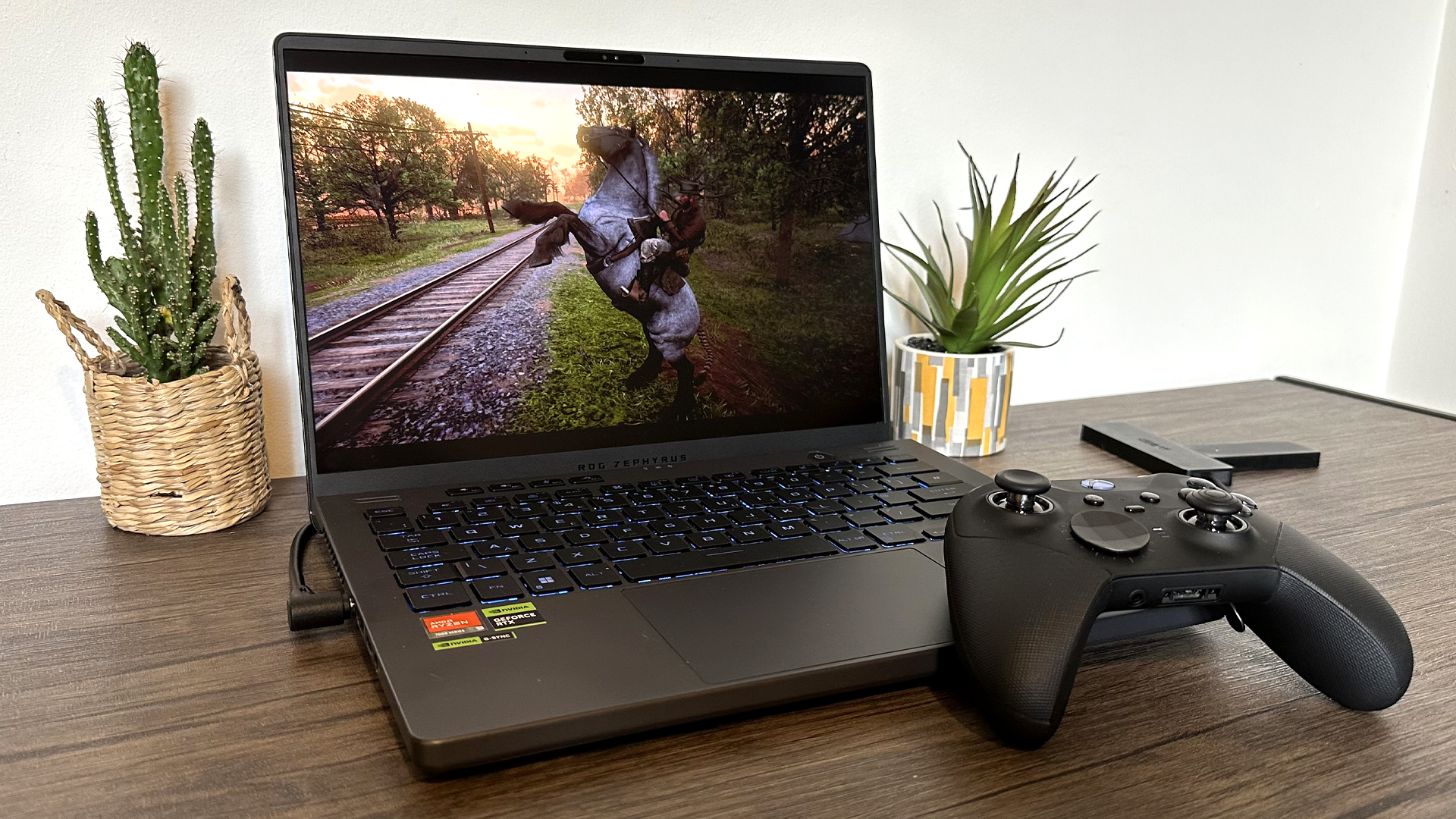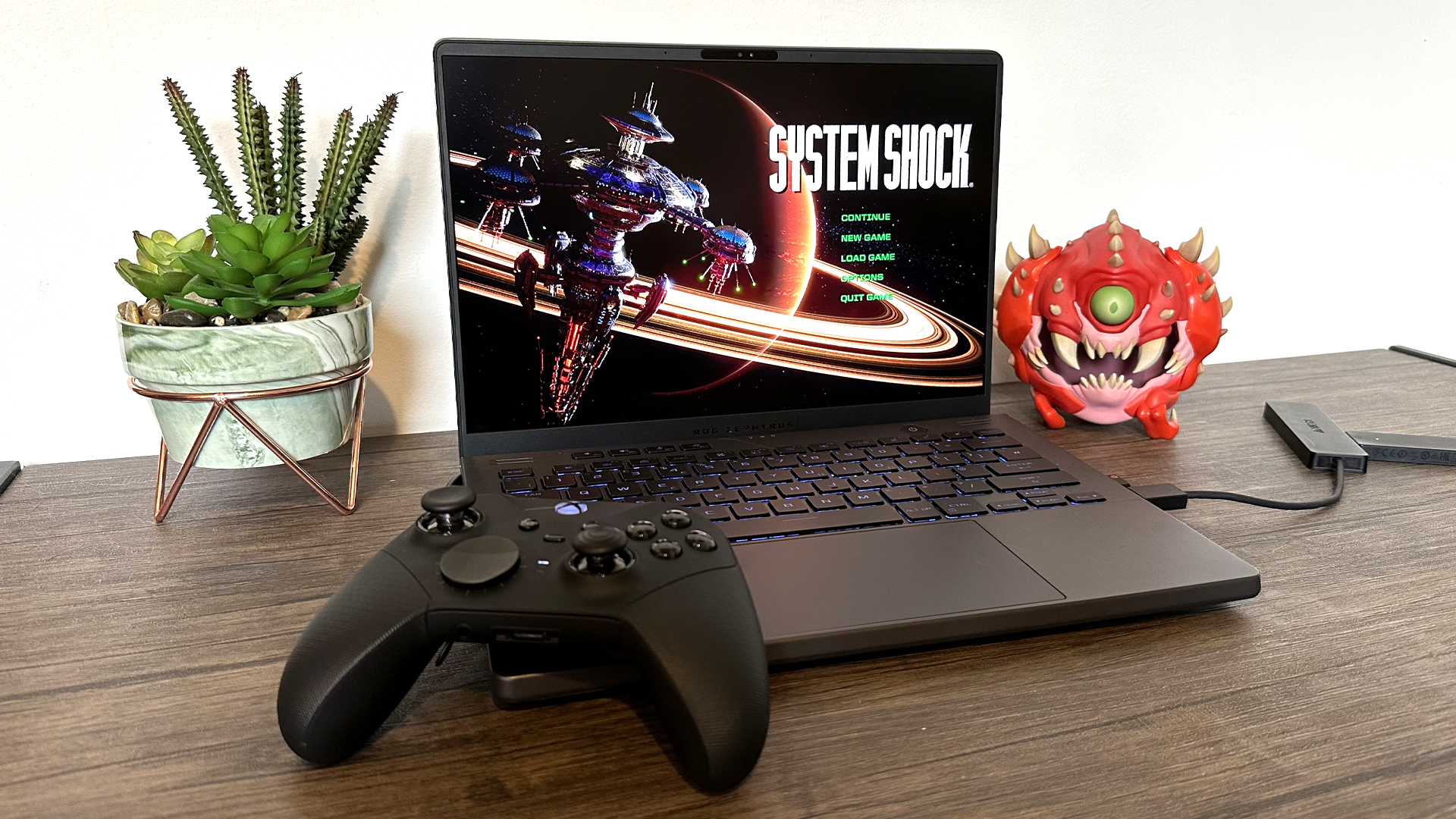
I love OLED. No, that’s underselling it. I’m obsessed with OLED. I bought my first OLED TV in 2015, and ever since I can’t get enough of the infinite black levels the ‘organic light-emitting diode’ technology provides.
But that doesn’t mean non-OLED displays haven’t come a long way; something I recently discovered when testing one of this year’s most powerful gaming laptops.
Enter the ROG Zephyrus G14 (2023) and its mini-LED screen that has shown me that OLED has some real competition on its hands...if you can afford it.
If you opt for the highest-end configuration — a unit that boasts an AMD Ryzen 7940HS 8-core CPU, an Nvidia GeForce RTX 4090 GPU and 32GB of DDR5 RAM — you’re looking at a wallet-crippling outlay of $3,299 / £3,599. That’s a colossal chunk of change, even for a machine with such impressive specs.
Substantially cheaper configs are thankfully available, and they share the same brilliant screen of the highest-end G14 I’ve been testing. Diving into specific specs, this is a laptop that boasts a 14-inch WQXGA IPS panel, which supports a slightly higher than 2K native resolution (2,560 x 1,600) up to 165Hz.
Is mini-LED at the level where it can challenge OLED as the king of screen tech? Not quite. But with my recent hands-on with the Zephyrus G14, there’s evidence that the best mini-LED displays are now within touching distance of OLED-level quality.
Mini-LED: small in size, big on performance
Before I delve deeper into what makes this laptop’s display so special, let’s discuss the underlying screen tech.
Mini-LED is an evolution of the traditional LCD display; one that reduces the quality gap between the best OLED TVs and modern LED panels. While mini-LEDs can't produce OLED black levels, they can get significantly brighter.
In simple terms, mini-LED is a more effective way of backlighting an LCD display. By deploying a greater number of dimming zones than traditional LCD tech, mini-LED displays are able to produce convincing black levels that are almost on a par with the best OLED screens.

As for the G14 itself? Holy smokes what a laptop. I’ve recently been testing Asus’ latest gaming monster, and it’s something else.
The biggest compliment I can pay the G14's mini-LED screen? For my first few hours with it, I thought it was an OLED
The biggest compliment I can pay the G14’s sensational screen? During my first few hours with the laptop, playing games in a dark room, I genuinely thought it had an OLED display. It was only after double checking the specs sheet ASUS had sent me that I discovered it was actually a mini-LED screen.
And that’s the point. This laptop’s display produces such scintillating black levels, my eyes were convinced they were ogling OLED technology.
Bloom with a view
My previous experience with mini-LED tech involves my iPad Pro 2021 and a Samsung Odyssey Neo G9 I sold after nine months of fairly solid service — it may be a great monitor for work, but that 32:9 aspect ratio doesn’t play nicely with most modern games. While I think these are great devices, they both show up the shortcomings of mini-LED technology.
Using both my tablet and former gaming monitor in a dark room, ‘haloing’ or ‘blooming’ was regularly evident, though not to a screen-ruining degree.
Blooming is best described as a screen defect on a non-OLED display where light leakage occurs when watching a dark scene. A prime example? Watch the opening scene from pretty much any Star Wars movie on a LCD TV and you’ll see a faint blurring effect around said stars in that galaxy Far, Far Away.

To the Zephyrus G14 and its exceptional screen’s credit, I never once noted the blooming effect when playing games or watching movies. And trust me, I booted up titles to seriously challenge the G14’s mini-LED credentials.
After stints on Resident Evil 4, the recent System Shock remake and Cyberpunk 2077, I can confidently say black levels are within touching distance of the likes of the LG C2 OLED — which we consider to be one of the best TVs you can buy today.
Watching content in a dark room on the G14, the quality of contrast, color and black levels deliver a knockout combination.
Throw in a 391 nits of peak brightness (respectable for a gaming laptop) and you’re left with a screen that serves up the punchy, vibrant highlights of an LED display with the inky blacks associated with OLED. Watching content in a dark room on the G14, the quality of contrast, color reproduction and black levels deliver a knockout combination.
I don’t give any of these mini-LED compliments away lightly. Normally, I’m a massive OLED snob.
While I love the idea of the Steam Deck, I’ll never buy one while Valve only offers an LCD model. It might be a great portable device, but I'd choose my Nintendo Switch OLED over the Deck's underwhelming display every time, such is my obsession for premium screen tech.
After playing some of the best PC games on the Zephyrus G14, I’m convinced mini-LED devices will continue to improve. With traditional OLEDs continuing to battle issues with limited brightness levels — a problem the LG G3 OLED and its brightness-boosting Micro Lens Array panel is trying to address — perhaps mini-LED could one day be the display tech to beat.
For the time being, however, the ROG Zephyrus G14's sublime screen deserves to be celebrated.







